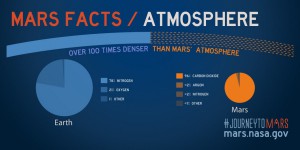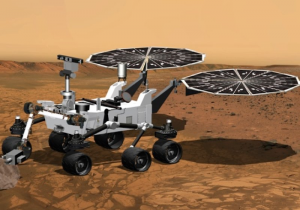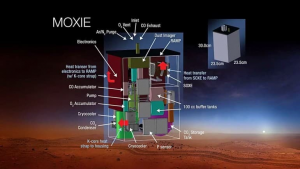Oxygen is important part of a breathable air. Yes, humans breathe it to live and rockets burn it to fly. However, this gas alone is not enough for Mars settlers to live and breathe a healthy life since long exposure to high concentrations of it is not good for the human body.
We breathe air that contains 21 percent of oxygen. On the Earth, oxygen is not only part of the air, it exists in water, plants, the human body, and even in rocks and minerals. This gas is essential for humans to breathe. Oxygen is needed to make and keep a fire burning. In the air, the oxygen also has another form known as ozone. “Ozone makes up part of the atmosphere known as the ozone layer which protects the Earth from harmful ultraviolet rays.” (Corbin, “Does 100 % of oxygen come from trees?”) When we exhale, we breathe out carbon dioxide enriched, which is simply oxygen-poor air. Oxygen is produced by some kinds of bacteria, and flora during photosynthesis. Most of the world’s oxygen is released by plants, a large part of which is ocean plants called phytoplankton. So, we know that we require oxygen to live and flora of the Earth utilizing carbon dioxide produces the oxygen and refresh the air, making it breathable for us. We also know that oxygen is the gas widely used in medicine to recover from life threatening conditions. Such information makes most of us thinking that breathing 100 percent oxygen would even be better for us. However, according to recent studies, it can be harmful to breathe pure oxygen not only for a long period of time and only in slightly higher pressure, but even in normal pressure. Therefore, finding the way how to produce oxygen on Mars we should think about its right concentration among other gases too. Other gases will need to be added to produce a more earth-like mixture. “Nitrogen or Argon are likely buffer gas candidates. Fortunately, those gases exist on Mars and could be separated out from the Martian atmosphere. The synthetic air that humans will breathe on Mars will slowly become contaminated with carbon dioxide.”
In accordance with this pretty informative picture from www.mars.nasa.gov which make as able to compare atmospheres of Earth and Mars, as well as with opinions of engineers posting their opinions at www.imagineeringezine.com we can learn that Nitrogen or Argon are likely buffer gas candidates to create breathable air on Mars. “Fortunately, those gases exist on Mars and could be separated out from the Martian atmosphere. The synthetic air that humans will breathe on Mars will slowly become contaminated with carbon dioxide.”
So, the same question is coming back: How to produce oxygen on Mars? Mike Wall in his publication “Oxygen-Generating Mars Rover to Bring Colonization Closer” posted at www.space.com in the beginning of 2014 informs reader regarding upcoming plan of NASA to send a new Mars rover to the red planet. He states that one of the instruments aboard the “2020 Mars rover will generate oxygen from the Red Planet’s atmosphere, demonstrating technology that could both keep astronauts alive on Mars and help them launch into space when it’s time to go home.” According to the author, “The instrument is known as MOXIE (Mars Oxygen In-Situ Resources Utilization Experiment). It will pull carbon dioxide from the thin Martian atmosphere, which is composed of about 96 percent CO2, and turn it into pure oxygen and carbon monoxide, said Michael Hecht of MIT, the instrument’s principal investigator.”
In one of the latest articles about this revolutionary idea published under informative by itself title “Scientists have a plan to make breathable oxygen on Mars for the first time” at www. Bussinessinsider.com, the author, Jessica Orwig, states that “MOXIE is just the beginning. If this rover-based test is successful, future missions could send larger versions of MOXIE to Mars.” “The objective is to build a 100-time scale of MOXIE some time we hope in the 2030s that will prepare liquid oxygen tanks or equivalent,” Michael Hecht, another principle investigator for MOXIE and assistant director for research management at the MIT Haystack Observatory, told Business Insider. According to Orwig’s article, “The way MOXIE works is relatively straightforward: It will take the abundant carbon dioxide in the Martian atmosphere, which is made of one carbon atom and two oxygen atoms, and isolate one of the oxygen atoms. They will then combine the oxygen atoms together to make O2, which is what we breathe here on Earth. After creating oxygen and carbon monoxide, MOXIE will release those two gases back into the Martian atmosphere.” “The MOXIE device could even generate liquid oxygen on Mars, potentially providing fuel for the astronauts to undertake a return journey to earth. It is hoped the Mars 2020 mission will teach NASA about how humans could possibly live on one of our nearest neighbors” as Oliver Wheaton states at www.metro.co.uk, in the article “NASA reveals plans to produce breathable air on Mars.”
Eric Mack in his article “New space race aims at creating breathable air on Mars” at www.gizmag.com, concludes that regardless of how soon we might actually see humans breathing on the surface of Mars, the odds seem good that we will at least be creating breathable air there within the next 5 – 10 years.
full article with all pictures and citations here: Oxygen






